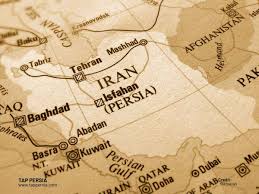Persia, known today as Iran, is one of the world’s oldest where is persia now? civilizations, located in Western Asia. Though the name “Persia” is often associated with the grandeur of ancient empires, it represents a region with deep cultural roots, breathtaking landscapes, and a history that has shaped art, science, and philosophy for millennia.
The Geographic Location of Persia
Historically, Persia covered much of what is now modern-day Iran. It lies at the crossroads of Asia, the Middle East, and the Persian Gulf, bordered by countries such as Iraq, Turkey, Armenia, Azerbaijan, Turkmenistan, Afghanistan, and Pakistan. The Persian Gulf and the Caspian Sea frame its southern and northern borders, respectively, giving the region strategic and economic importance throughout history.
A Glimpse into Persian History
The name Persia originates from the ancient region of Parsa (or Persis), located in the southwest of present-day Iran, near the modern city of Shiraz. Around 550 BCE, Cyrus the Great founded the Achaemenid Empire, often regarded as the first Persian Empire. It became one of the largest and most influential empires in world history, stretching from the Indus Valley in the east to Greece and Egypt in the west.
Over the centuries, Persia was home to several great dynasties — the Achaemenids, Parthians, Sassanids, and later the Safavids — each contributing to the development of architecture, literature, art, and governance. The ruins of Persepolis, once the ceremonial capital of the Achaemenid Empire, still stand today as a symbol of Persia’s former glory.
Persia Becomes Iran
In 1935, the country officially requested to be called Iran in international correspondence. The name “Iran” means “Land of the Aryans,” reflecting the country’s Indo-Iranian heritage. However, the word “Persia” remains widely used in historical and cultural contexts, especially when referring to ancient history, Persian art, or the Persian language (Farsi).
The Cultural Legacy of Persia
Persia’s influence extends far beyond its borders. Persian poets such as Rumi, Hafez, and Ferdowsi have inspired generations across the globe. Persian architecture — with its intricate tilework, majestic domes, and lush gardens — continues to symbolize elegance and harmony. From the invention of algebraic concepts to the development of sophisticated medical and astronomical knowledge, Persian scholars left an indelible mark on world civilization.
Modern-Day Iran
Today, Iran is a modern nation that blends its ancient traditions with contemporary life. Cities like Tehran, Isfahan, and Shiraz showcase both modern architecture and ancient heritage. The Persian language, cuisine, art, and hospitality continue to reflect the timeless spirit of a culture that has endured for thousands of years.
In Summary
Persia, now known as Iran, is more than just a place on the map — it is a cradle of civilization, a beacon of cultural richness, and a bridge between the ancient and modern worlds. Its history, art, and achievements continue to inspire and influence humanity, reminding us that Persia’s legacy is eternal.

